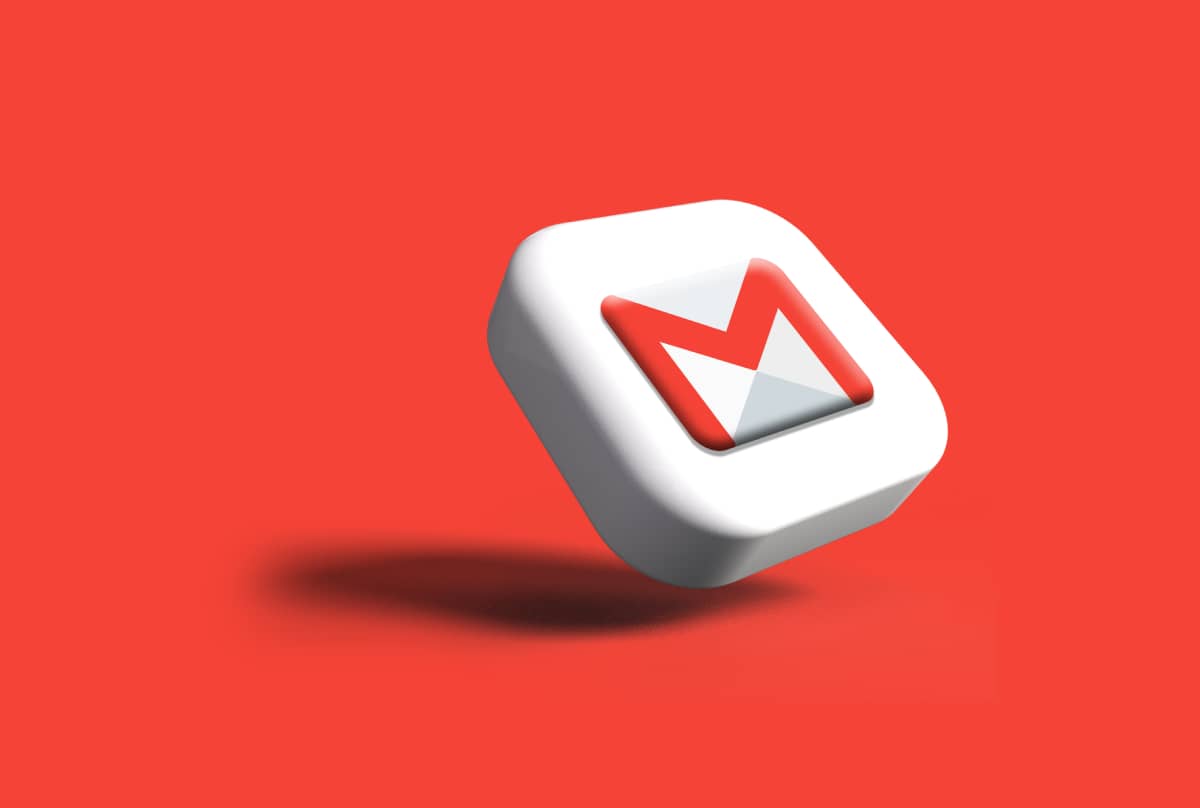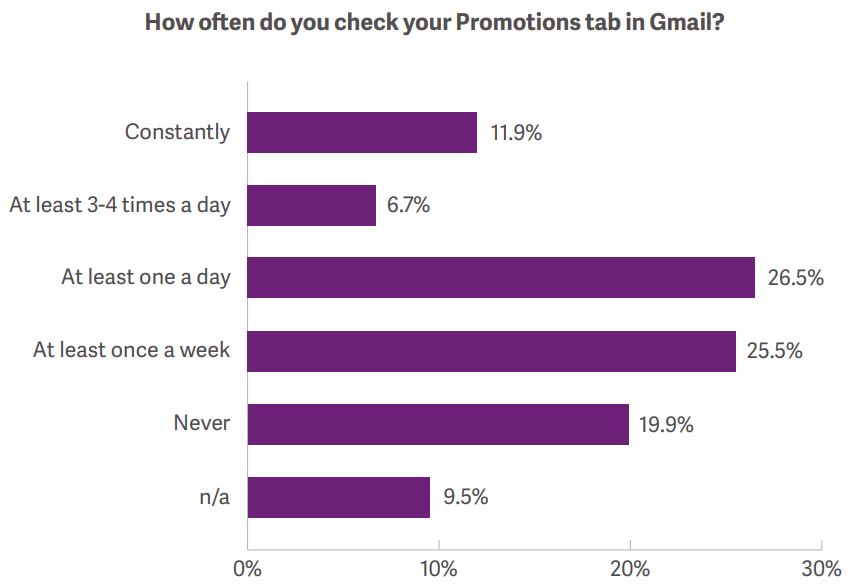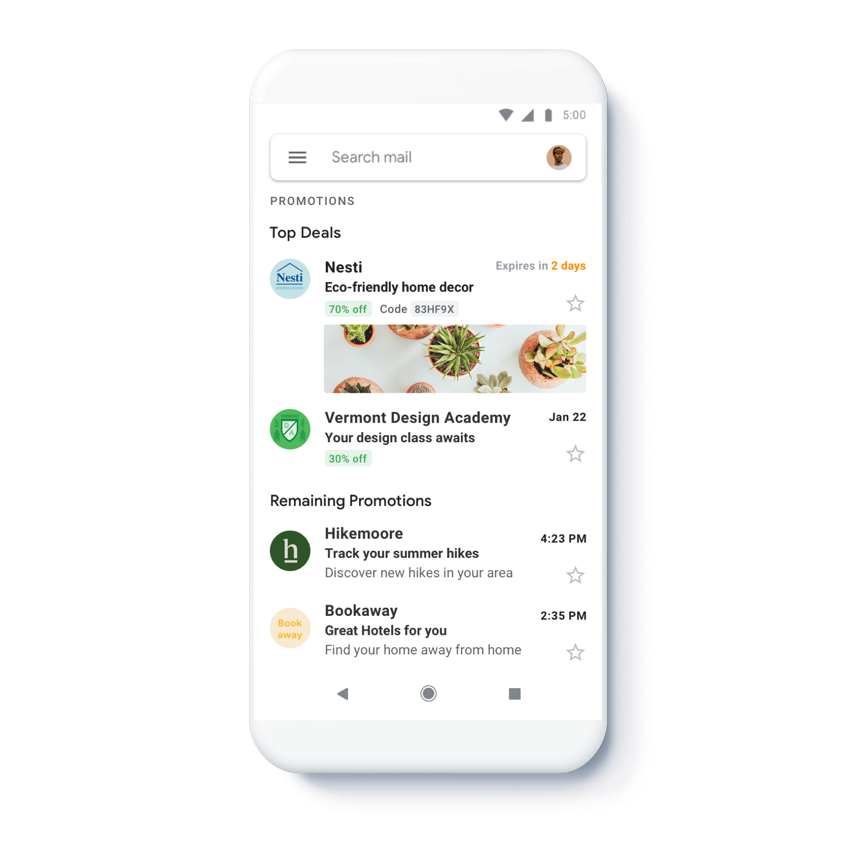
Gmail introduced its inbox tabs and started sorting email messages automatically in 2013. Some emails go to the Primary tab, others to the Social, and a big part of emails land in the Promotions tab. For marketers, this was a significant change. No surprise that it has caused a lot of fear and negativity until this day. But is it really that bad? Today, let’s take a closer look at the Gmail Promotions tab.
Fear of Change
Many marketers complained about this change – you’ve probably seen comments such as “nobody will open my emails if they land in the Promotions tab.” Some businesses did not and still do not want their emails to be placed in the Promotions tab, thinking that it will harm their open rates and engagement.
Remember, both marketers and Gmail users were adapting to this change. And the fear of change is very real. Our minds are built to reject and resist uncertainty as our brains prefer a predictable (even a negative!) outcome over the unknown. But the unknown can be good!
Gmail Promotions Tab is Not the Spam Folder
First and foremost, marketers shouldn’t fear the Gmail Promotions tab. It’s not the Spam folder. Gmail has complex (and continuously changing) algorithms for assessing and sorting messages. If your message is promotional, then it should be in the Promotions tab. Very often, Gmail users don’t even see spam messages as they are filtered to the Spam folder, while promotions are there for them in their inbox.
It does not in any way mean that your message is not valuable or relevant if it’s sent to the Promotions tab. Gmail and marketers have a common goal – the best possible experience for email recipients. When messages are in the Promotions tab, they are not mixed with the Primary tab emails, such as work or family conversations. Naturally, Gmail users would not want a marketing email to disrupt that flow. And when they are ready for marketing emails, they check their Promotions tab.
Email Recipient Behaviour Has Adapted
The introduction of these different tabs obviously affected the inbox behavior of Gmail users. The initial introductory stage of the tabs was turbulent because users needed to learn and understand the new functionality. But now, Gmail users expect promotions, offers, deals, and discounts to land in the Promotions tab. That’s the new “go-to” place.
Customer email reading and opening patterns have changed, but not for the worse. The shopping journey through emails has a new, let’s call it, “shortcut”. If the email recipient is looking for a promotional offer or wants to shop online, it’s so much more comfortable with the tabs. You don’t need to scroll through the entirety of your inbox – you simply check your Promotions tab.
Yes, the Promotions tab will be busy with other marketing emails. But additional noise, such as Twitter updates or LinkedIn notifications and the Primary tab conversations, will not be there. It will allow the email reader to save time and focus on the marketing emails, and that’s critical knowing that, generally, people’s inbox attention spans are really short. Therefore, the value of the email open will actually be much higher when your marketing email is opened in the Promotions tab than in the Primary tab.
How Often Do Gmail Users Check Their Promotions Tab?
That’s the big question! More than 45% check their Promotions tab at least once a day, according to Validity and Return Path data. 11.9% are constantly checking it, and 6.7 % open it at least 3 or 4 times a day.

Almost 20% of the respondents indicated that they never open their Promotions tab. However, we can assume that they probably wouldn’t open marketing emails in the Primary tab. Or worse, be very negative towards them.
As you can see, many Gmail users do open their Promotions tab to look at and read the marketing emails. These email openers are much more likely to convert and act on your call-to-actions.
Promotions Tab & Gmail Annotations
Have you noticed that Gmail sometimes displays images and snippets of important information from a promotional email? That’s Gmail annotations, and that’s an amazing feature of – guess what? – Gmail Promotions tab.

Annotations can display images and other information, such as expiration dates, promo codes, offers, and deals. However, even if you add the annotation to your email, it doesn’t 100% guarantee that Gmail will display it in the inbox, but there’s a good chance that it might.
And if it does, it’s like your email has just won a grand prize – your email visibility will get a significant boost. And, as Google says, annotations are there to “inspire and drive action”. That’s a fantastic benefit that marketers can explore further.
Still Aiming for the Primary Tab?
If you still want your messages to be sent to the primary tab, there are a few tips that might help your emails land there. However, you should know that there isn’t one magic formula that will guarantee the intended placement of your emails. Also, remember that not all Gmail users use tabs.
- Add to Contacts: ask your readers to add you as a contact to their email address book.
- Personalization: use personalization in your emails, such as their first name.
- Simplify content: your emails should sound like they are one-to-one emails, not bulk email deployment messages.
- Minimize the links: don’t add many links in the emails, as Gmail will probably see them as a promotional email feature.
- Plain text email: it’s more likely that emails built like plain text emails without visuals and other design elements (even if they are HTML emails) might land in the Primary tab.
Final Words: Use the Opportunity
The Gmail Promotions tab, even with all the skepticism surrounding it, has found its rightful place in email marketing. It presents so many opportunities for marketers to develop their emails further, discover new features, be more visible and drive action and conversions.
Also, remember that you should always expect that there might be new features and improvements on the way!